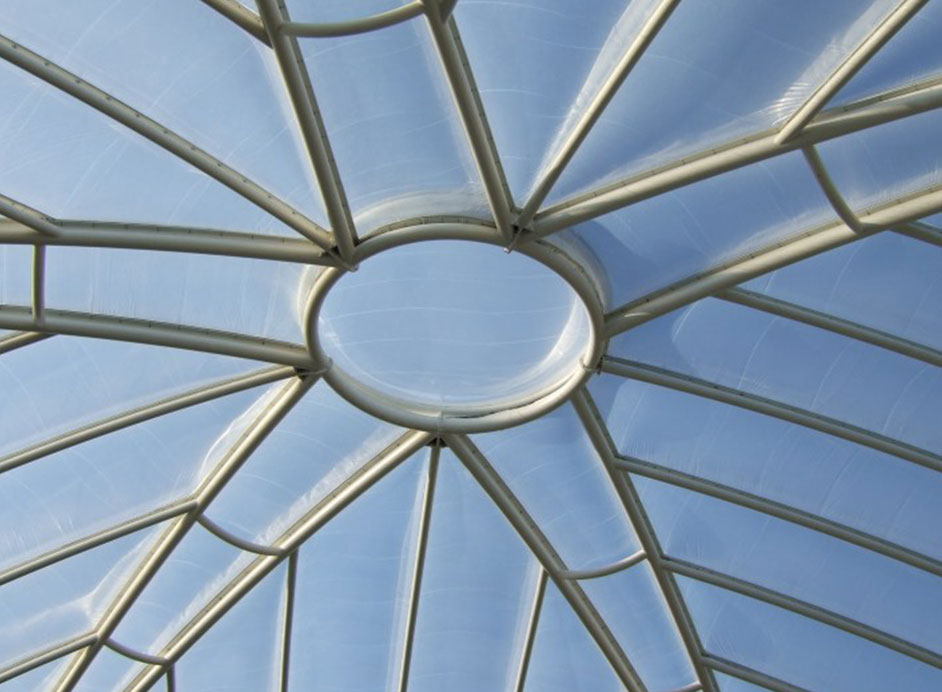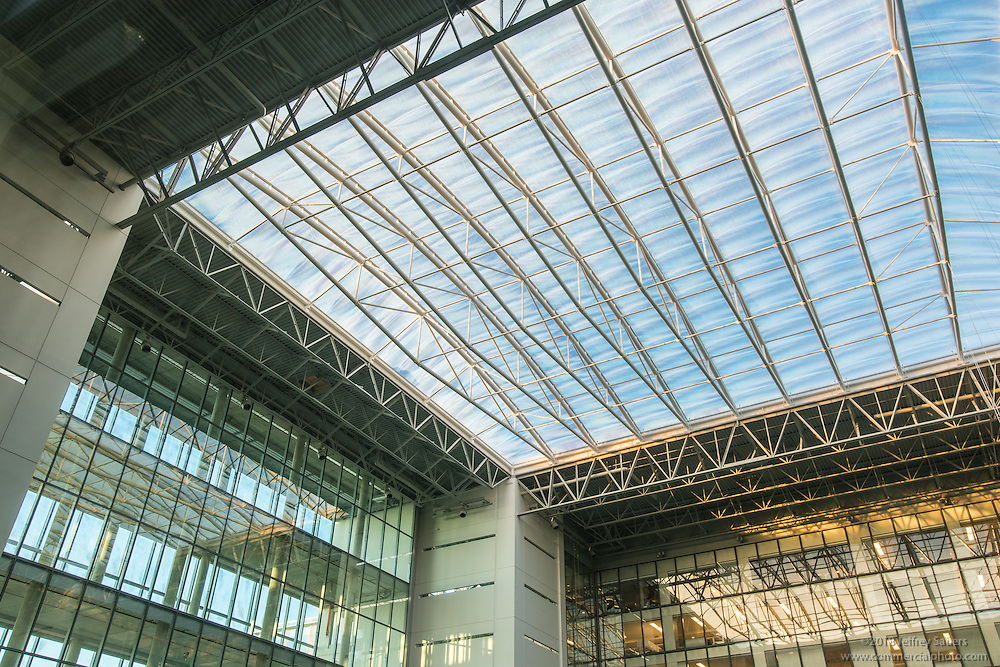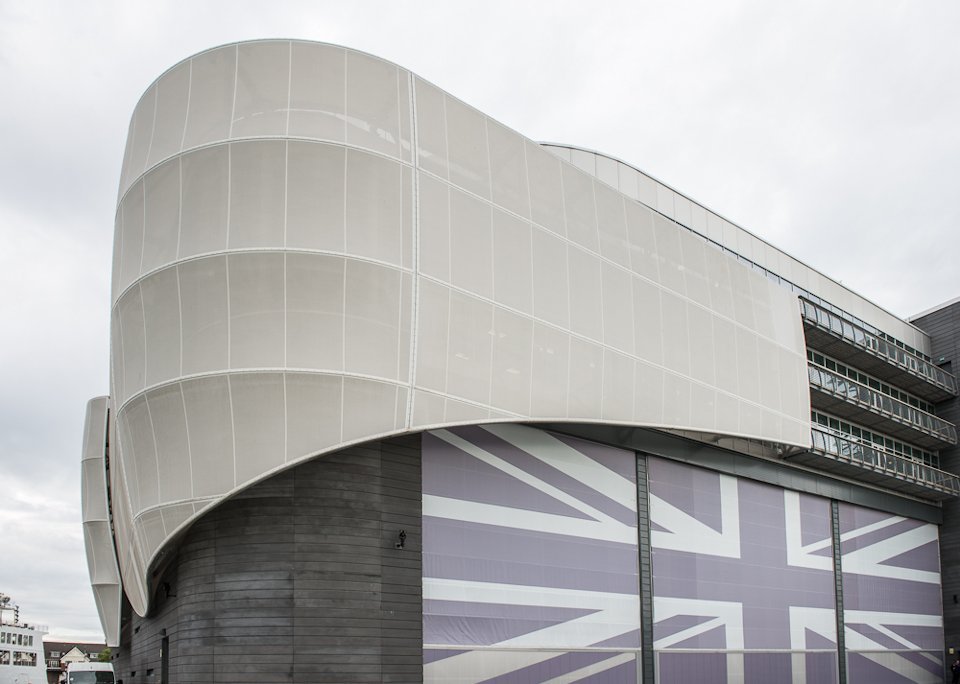Ethylene-Tetrafluoroethylene (ETFE)
Ethylene-Tetrafluoroethylene
Ethylene-tetrafluoroethylene, better known by its acronym ETFE, offers designers a remarkable solution to roofing systems, panels, and facades that integrates modern lightness, durability, design, and ecological values. ETFE roofing systems are also more cost-efficient than their adversaries.
The main advantages of this exceptional material are:


ETFE foil is a chemically inert material that resists all chemical agents combining surface tension and provides great resistance to all environmental pollution. The advantage of self-cleaning properties is that they do not weather or require cleaning other than general rainfall.
The excellent light transmission properties (>92%) and the very low weight compared to glass panels (about 1%), allow you to create lightweight and architecturally dynamic structures and roof systems. In addition, when using PTFE in pressurized pillows, it is possible to achieve control of both sunlight transmission and effective insulation properties to meet codes.
EFTE foil covering also offers excellent acoustic properties, as the material does not reflect sound well which allows it to virtually eliminate the echo effect so common with glass.
The material is approved fire-resistant per international building codes. When panels are exposed to flame, the material actually shrinks and does not spread flames or have any falling or dripping material. UV radiation does not degrade the material and this combined with being inert to chemicals guarantees extreme durability without losing performance in conditions ranging from desert climates to extremely cold climates and ranges of -190°C to +150°C.
An ETFE cladding system offers a flexible and lightweight alternative to traditional glass cladding which is sensitive to slight movements of the building’s primary structure. ETFE, whether used as a single-layer membrane tensioned between structural frameworks or as pneumatically prestressed air cushions, the versatility allows it to adapt to deformations or unique shapes and designs of any given roofing system structure.
ETFE is also an environmentally friendly material and is 100% recyclable at a cost more competitive than glass.

